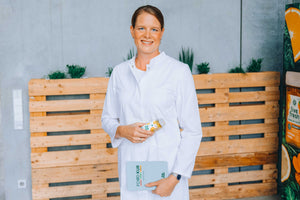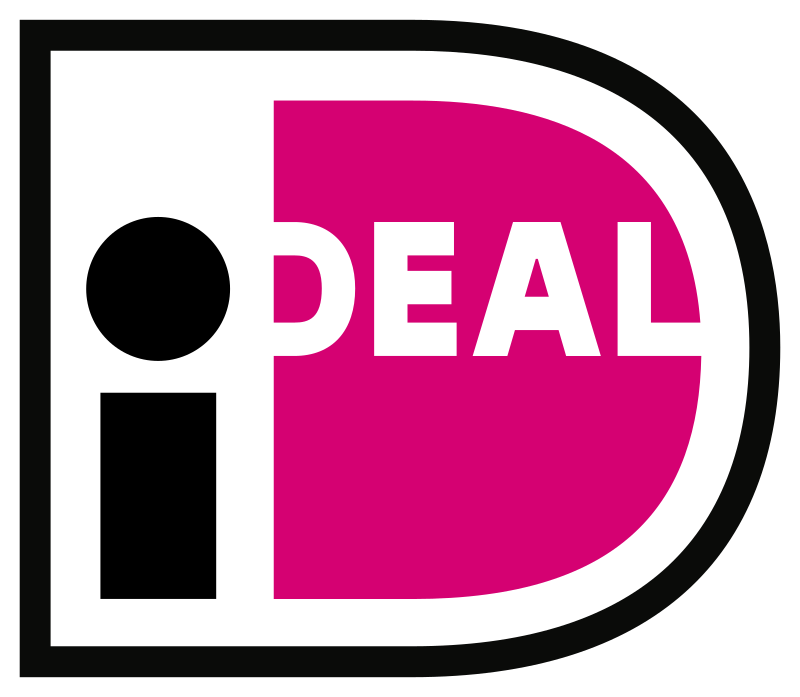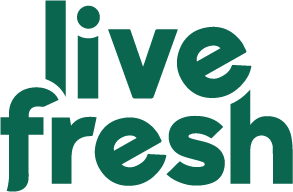Die vegane Ernährungspyramide ist eine praktische Richtlinie für eine ausgewogene und gesunde pflanzliche Ernährung. Immer mehr Menschen entscheiden sich dafür, Tierprodukte aus ihrer Ernährung zu streichen und stattdessen auf eine vegane Lebensweise umzusteigen. Dieser Wandel erfordert eine bewusste Planung, um sicherzustellen, dass alle benötigten Nährstoffe auf pflanzlicher Basis abgedeckt werden. Die vegane Ernährungspyramide bietet hierbei wertvolle Orientierung und zeigt, wie man sich auf gesunde Weise vegan ernähren kann. In diesem Artikel werden wir die verschiedenen Ebenen der veganen Ernährungspyramide erkunden, um ein besseres Verständnis dafür zu entwickeln, wie eine ausgewogene pflanzliche Ernährung aufgebaut sein sollte.
Highlights
- Die vegane Ernährungspyramide fördert eine ausgewogene pflanzliche Ernährung und umfasst alle wichtigen Nährstoffgruppen.
- Basis: Wasser und alkoholfreie Getränke; Obst und Gemüse stehen ebenfalls im Mittelpunkt.
- Proteinquellen wie Hülsenfrüchte, Nüsse, gesunde Fette und komplexe Kohlenhydrate unterstützen die Nährstoffversorgung.
The vegan food pyramid: an everyday guide for your diet
The vegan food pyramid is a valuable guide for people who decide to follow a plant-based diet. It ensures that all important nutrients are consumed in a vegan way to ensure a balanced and healthy diet. This pyramid is similar in some ways to the traditional food pyramidbut has been specially adapted to the needs of vegans.
The basic idea behind this pyramid is, to evaluate foods according to their energy density and nutrient density and to categorize them into different levels. The further down the pyramid a food is, the more of it you can enjoy in your daily diet. Foods higher up the pyramid should be consumed in smaller quantities. However, with the exception of the top level, these foods are also important for your overall diet and nutrient supply.
Here
How the vegan food pyramid works
The vegan food pyramid consists of different levelsrepresenting the most important food groups. This is why it is often referred to as a food pyramid.
The base of this pyramid is formed by Non-alcoholic drinks followed by fruit and vegetableswhich are rich in vitamins, minerals and fiber. As the foundation of a healthy vegan diet, these should be on the menu every day. Above the fruit and vegetables level is the legumes and nuts level. These food groups are excellent sources of protein and nutrients and should form an important part of a vegan's daily diet. Above them in the pyramid are Vegetable oils, fats and salt. Then come cereals and potatoes. They provide you with carbohydrates and keep you full. At the top of the pyramid are foods that should be consumed to a limited extent in a vegan diet - for example sugary snacks and processed foods.
Implementing the vegan food pyramid in everyday life: all levels at a glance
In everyday life, the vegan food pyramid offers a clear and well-structured instructions, to achieve a balanced plant-based diet. This pyramid organizes the different food groups according to their importance and shows how they can be integrated into the daily diet. In this overview we will the individual levels of the vegan food pyramid in more detail and practical tips for implementation in everyday life with us.
If you want to make it easier for yourself, you can refer to the vegan food cleanse from LiveFresh to fall back on. This contains all the meals you need throughout the day. Thanks to the well thought-out composition of the dishes, you are provided with all the nutrients you need and can lose weight at the same time. For breakfast, enjoy a low-carb high-protein porridgetry your way through the various vegan bowls or try our vegan protein drink for an extra portion of protein.
Level 1: Drinks
The basis of the vegan food pyramid includes non-alcoholic drinks. Above all, this includes water, which is essential for our body. It is recommended, drink enough water every day to drinkto cover your fluid requirements - at least 2.5 liters. Tea and coffee (without milk) are also good options. Just make sure to avoid sugary drinks.
Level 2: Fruit and vegetables
The next level is dedicated to fruit and vegetables. This food group should be the the majority of your daily diet of your daily diet. Eat at least 5 portions a day - one portion is equivalent to a clenched fist. Fresh fruit and vegetables are rich in vitamins, minerals and fiber. Both can eaten raw or processed into a variety of dishes from smoothies to salads and curries. In our News & Juice Blog you will find numerous delicious and above all healthy vegan recipes to try out and cook.
Level 3: Protein sources such as pulses, nuts and seeds
The next level focuses on protein sources such as pulses (e.g. beans and lentils), nuts and seeds. These provide valuable vegetable protein and healthy fats. You should eat at least two to three portions a day. They can be enjoyed in soups, stews, salads or as snacks and contribute to the Muscle maintenance and regeneration and regeneration.
Level 4: Oils, fats and salt
Oils, fats and salt can be found here. These foods and spices should be consumed in moderation. Healthy oils such as olive oil or rapeseed oil can be used for cooking and salad dressings. Avocados and nuts are also good sources of fat. Salt should only be used sparingly be used sparingly.
Level 5: Cereals and potatoes
Level 5 includes cereals and potatoes. These include whole grain products such as oatmeal, whole grain pasta and rice. These foods provide Energy in the form of complex carbohydrates and are a source of fiber. They form the basis of many hearty dishes and provide satiety. For a healthy low carb diet, however, you should not eat too much of them.
Level 6: Indulgent foods such as sweets and snacks
The top of the vegan food pyramid includes luxury foods such as sweets and snacks. They should only be consumed occasionally and in moderation. Of course, make sure to choose vegan options. There is a wide range of vegan sweets and snacks that are made without animal products.
Correct nutrient and vitamin supply: Vitamin B12 supplementation
One of the most important aspects of a balanced vegan diet is the correct supply of nutrients and vitamins. One vitamin that is particularly in focus is vitamin B12. This essential vitamin is crucial for various functions in the body, including the formation of red blood cells and supporting the nervous system.
The challenge with a purely plant-based diet is that Vitamin B12 is mainly found in animal foods is found in animal foods. It is therefore crucial for vegans, supplement vitamin B12to avoid possible deficiency symptoms. The exact dosage may vary from person to person, so it is advisable to discuss this with a doctor or nutritionist. An adequate supply of vitamin B12 is crucial in order to maintain the Maintain health and prevent deficiency symptoms.
In addition to supplementation fortified vegan foodssuch as certain plant-based dairy products and breakfast cereals, should be included in the diet plan to increase your B12 intake. Our juice Rote Rakete will contain Vitamin B12 from buckwheat germ powder. Just one bottle covers more than your daily requirement. So nothing stands in the way of a healthy vegan lifestyle.
What should a vegan eat every day?
Sufficient fluid intake in the form of water as well as fresh fruit and vegetables form the basis of a healthy vegan diet. As a vegan, you should also daily sources of protein such as tofu, pulses like beans or lentils and nuts into your diet every day. These are important sources of protein that should be part of your daily diet.
Which fruit for a vegan diet?
With a vegan diet there is a wide selection of fruit varieties, that you can enjoy. Here are some popular types of fruit that are often used in a vegan diet:
- Apples: Apples are rich in fiber and vitamins.
- Bananas: Bananas are an excellent source of potassium and are good as a snack or in smoothies.
- Oranges: Oranges are rich in vitamin C and are a refreshing treat.
- Berries: Strawberries, raspberries, blueberries and blackberries are full of antioxidants and vitamin C.
- Grapes: Grapes are sweet and juicy and an excellent source of natural sugar.
- Citrus fruits: Lemons, limes and grapefruits are versatile and add a fresh flavor to dishes.
- Mangoes: Mangoes are sweet and exotic and contain lots of vitamin A.
- Kiwis: Kiwis are rich in vitamin C and fiber.
- Pineapple: Pineapple is juicy and contains the enzyme bromelain, which aids digestion.
- Avocado: Although often considered a vegetable, the avocado is botanically a fruit. It is an excellent source of healthy fats.
These fruits can be eaten raw, added to smoothies, salads or desserts or enjoyed as healthy snacks.
Can you eat bread as a vegan?
Yes, as a vegan you can usually eat bread. The most breads are made from plant-based ingredientsincluding flour, water, yeast or sourdough, salt and sometimes other ingredients such as seeds, nuts or dried fruit.
However, there are a few things to bear in mind:
- Honey: Some bakeries use honey to sweeten or glaze bread. As a vegan, you should avoid honey as it is produced by bees. Therefore, check the ingredients list carefully.
- Dairy products: Some traditional breads or rolls may contain milk or dairy products such as milk powder or butter. However, there are many vegan bread variations without these ingredients.
- Egg: Some sweet bread or pastry recipes may contain eggs. You can look for vegan bread variations or try replacing egg with plant-based egg substitutes such as applesauce, soy flour or flaxseed meal when making bread at home.
The majority of commercial breads, especially wholemeal breads, are usually vegan-friendly. If you are unsure whether a particular bread is vegan, you should check the ingredients list on the packaging or ask the baker about the ingredients. There are also special vegan bread brands and varieties that are explicitly labeled as vegan. are.
Is jam vegan?
Yes, Marmalade is usually veganbut it depends on the specific ingredients and how it is made. Traditionally, jam is made from fruit, sugar and pectin (a gelling agent). This basic ingredients are plant-basedwhich is why many jams are vegan by nature.
However, there are a few things to bear in mind:
- Gelling sugarSome jams may contain gelling sugar, which sometimes contains animal products such as gelatine or bone char. Vegans should look for jams made with purely plant-based gelling agents or products specifically labeled as vegan.
- Flavorings or coloringsIn some cases, jams contain artificial flavors or colors. These may be synthetic or of animal origin. It is advisable to check the ingredients list or look for vegan brands.
- Notes on traces of dairy productsSome manufacturers may state on the packaging that the product may contain traces of milk or other allergens. This usually means that the product is made in the same facility where dairy products are processed. Such jams are acceptable to most vegans as it is purely an allergy warning and not an intentional ingredient. Nevertheless, there are also some who do without it.
Overall most jams are plant-basedbut it's a good habit to check the ingredients list to make sure there are no animal products in them.
Das könnte dich auch interessieren

Dr. Ulrike Fischer
Nutritionist
Developed on a scientific basis by Dr. Ulrike Fischer, who holds a doctorate in nutritional science.
Die vegane Ernährungspyramide ist eine praktische Richtlinie für eine ausgewogene und gesunde pflanzliche Ernährung. Immer mehr Menschen entscheiden sich dafür, Tierprodukte aus ihrer Ernährung zu streichen und stattdessen auf eine vegane Lebensweise umzusteigen. Dieser Wandel erfordert eine bewusste Planung, um sicherzustellen, dass alle benötigten Nährstoffe auf pflanzlicher Basis abgedeckt werden. Die vegane Ernährungspyramide bietet hierbei wertvolle Orientierung und zeigt, wie man sich auf gesunde Weise vegan ernähren kann. In diesem Artikel werden wir die verschiedenen Ebenen der veganen Ernährungspyramide erkunden, um ein besseres Verständnis dafür zu entwickeln, wie eine ausgewogene pflanzliche Ernährung aufgebaut sein sollte.
Highlights
- Die vegane Ernährungspyramide fördert eine ausgewogene pflanzliche Ernährung und umfasst alle wichtigen Nährstoffgruppen.
- Basis: Wasser und alkoholfreie Getränke; Obst und Gemüse stehen ebenfalls im Mittelpunkt.
- Proteinquellen wie Hülsenfrüchte, Nüsse, gesunde Fette und komplexe Kohlenhydrate unterstützen die Nährstoffversorgung.
Inhalt








